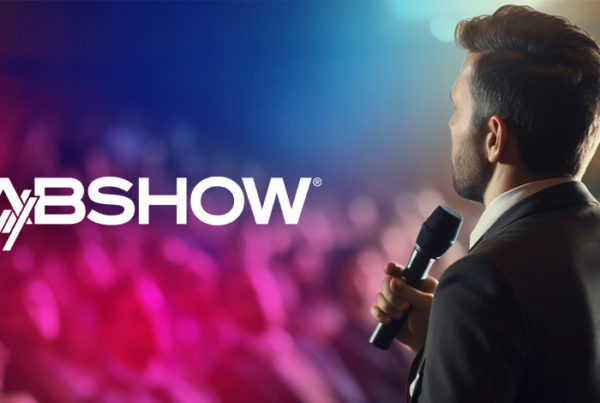One of the biggest local TV advertising trends for 2022 is online sports betting. With more states legalizing this type of wagering and professional sports leagues embracing it, local TV markets are cashing in on these ads. This vertical is a relatively new player in the local advertising market, and it’s bringing substantial opportunities to boost OTA (over-the-air) revenue.
In this post, we’ll dive into the trend and what you can do to capture these ad dollars.
2021 Numbers Were a Boom
Nielsen reported that online gambling ad spend on spot TV was $154 million in Q1 2021. That represented 78.4% of total spending. Honing in on how companies allocate ad dollars, Nielsen revealed that online sportsbooks and gambling sites spent over $153 million on local TV ads during Q1 2021. Advertisers mostly spent these dollars locally, accounting for 78.4%.
National advertising increased from December 2021 through January 2022, according to iSpot.tv. The top sportsbooks spent $86.4 million. Why the increase in national? Most of this is contributable to the NFL’s end of regular season and playoffs. They all spent big on Big Game commercials.
So, what’s the greater outlook for this category?
2022 Projections Are Sky High
BIA Advisory Services described online sports betting advertising as a significant driver in its 2022 U.S. Local Advertising Forecast. The expected growth is 44.9% from 2021 to 2022. That increase was the largest for any sub-vertical in the report.
According to BIA, the total spending for the vertical this year will be $1.59 billion. Of that, TV OTA is the biggest winner, at 34.4%. Looking further along, BIA and Nielsen estimate that TV OTA revenue could hit $806 million by 2024.
So, who is going to be eligible for these dollars?
from 2021 to 2022
The Online Sports Betting Landscape
Because the laws vary by state, local markets where it’s legal stand to win big here. Per the American Gaming Association (AGA), 21 states and Washington, D.C., allow for online bets. Another eight states have retail-only betting. Most states have multiple operators, while others only have one. For example, New Hampshire has an exclusive deal with DraftKings.
Florida and Ohio legalized it, but it’s not operational yet. Ohio expects to begin operations in late 2022. Litigation currently has Florida in limbo. Nebraska legalized it for retail sportsbooks only. Additionally, 11 states have legislation on the ballot for 2022.
If you’re in one of those 21 states or Washington, D.C., the opportunity is ripe! To define the opportunity, you’ll need to know who the top players are.
Online Sports Betting Apps: Who’s Spending and Who’s Betting
Two apps are leaders in the space. They have the largest market share and spend the most ad dollars — DraftKings and FanDuel. They had a “jump” on the rest, as they debuted right after the 2018 Supreme Court ruling that made their operations legal.
Next up are newer apps with lots of brand equity — BetMGM and Caesars Sportsbook. At the bottom are some smaller apps, including Barstool Sportsbook.
According to Nielsen, the top four represented 93% of ad spend in 2021. Of course, what will determine who is spending in your state will be those able to do business there. The seasonality of sports also impacts dollars. It appears that most online sportsbooks spend more during the NFL season, as it’s the professional league with the highest ratings and number of fans.
However, Nielsen polling showed that NHL fans were the most interested in sports betting. The NFL was at the bottom of the list. So, there’s no direct correlation between sports watchers and bettors. This tidbit is important, as each state has a different viewership model in terms of sports. Also, don’t forget that sports betting is just for professionals. NCAA basketball and football are prime targets as well.
Why TV Is the Winner in Online Sports Betting
According to a new survey released by TVB (Television Bureau of Advertising), broadcast TV is the most crucial media influence on those considering betting. What type of influence does this medium have? Nearly all respondents (95%) said that those ads impacted how they searched online.
Consumers who have placed bets also relayed what actions they took after viewing or hearing an ad. At the top at 46% was opening an account, followed by placing a bet online at 42%.
With such a meaningful place in the decisions of consumers, sports betting apps will continue their spending across all types of programming.
Programming Types That Online Sports Betting Advertisers Target
Sports-related content is a programming category that complements these ads. However, you may be surprised to learn that news programming gets the greatest share. That’s according to Nielsen, which points out that stations have more control over their ad inventory and less so with sports, which airs primarily in primetime. As a result, broadcast TV has more flexibility to place ads during the news. Nielsen reports that the share of these ads in news increased 40% in the last year. For advertisers, news spots are attractive because of the diverse viewership.
How to Capture this Ad Revenue Opportunity
Now that you have data and insights, look at what’s happening in your state. If online sports betting is legal, find out what players operate in your space. Next, do some additional research to understand their spending with your station or your competitors. Then, it’s time to find the decision-makers. Here are some points to make:
- You control the local news inventory, which they find attractive. However, you aren’t pigeonholed to one category. These ads can play on sports programming as well as variety, drama or comedy. Sports wagerers are a diverse demographic, and TV OTA is an excellent way to engage them.
- You have the edge over digital, which is unique. Many digital platforms for third-party advertising don’t allow this ad type. Local TV and radio are the beneficiaries of this limitation.
- Sports betting is cyclical, but there’s never an “off” time because sports are year-round. They’ll spend more at peak times, but it can be a category that delivers incremental and consistent revenue.
- You have the power to maximize revenue for this ad type and any other by using data to drive rates. It’s a concept called dynamic pricing, which is a tool that uses data related to avails, demand, timelines and historical data to optimize pricing for every spot. Even if these advertisers buy in bulk or are returning customers, you can still use dynamic pricing to grow revenue without adding inventory. The market sets the price, not you.
As with any sensitive ad category, always check your state’s requirements to ensure compliance with regulations regarding content and placement.
Game On: Online Sports Betting Has Winning Potential
Local TV has a chance to be a leader in this ad category. Based on where you are and the regulatory playing field, you could generate substantial revenue for your station. You can increase that by using dynamic pricing. It’s a real game changer for TV ad spots.






